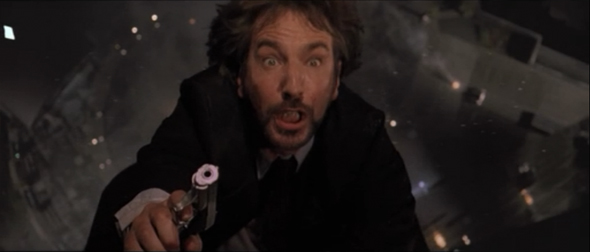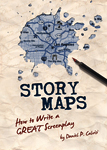Die Hard script
One can’t think “action movie” without thinking Die Hard. I remember watching the epic commercials for the film during the 1988 Academy Awards, wherein they promised the movie would be the first in decades to be presented in full 70mm wide-screen, and feature 6-track Dolby Surround Sound (yes, SIX tracks!). But that wasn’t all. What really mattered was the tagline: “It will blow you through the back wall of the theater!”
I had to find out if this was true.
Even though I was only 5 years old in 1988 (wocka wocka) I went to see it with some of my action-movie buddies, and, lo and behold, it happened. We got blown through the back wall of the theater.
It was pretty flimsy dry-wall, softened over the years by imitation popcorn flavoring and Fresca, but, STILL, that’s some serious cause and effect, people. The theater owner even tried to shake us down for the damage to his wall, but we reminded him that we could sue his ass for the concussions we’d received from being blown through said wall, even though we were so euphorically punch drunk from our head wounds, we just got back in line to see the next showing.
Anyway. Point is, the movie is a blast to the balls. In a good way. And I’ve been thinking about it lately, about what a great film was written by Jeb Stuart and Stephen E. De Souza and directed by John McTiernan and how much we need an action movie nowadays that is this smart, witty, crass, hilarious, thrilling and ultimately satisfying. We’re not going to get that from the Conan “re-boot” (which bombed). We need our action writers to work harder and the studios to trust them to tell stories, not just help sell toys.
Speaking of the major studios–if any of you bigwigs are reading this, I’ve got a million-dollar pitch for you: Die Hard in a Bouncy House.
Think about it. You get the parents, their kids and the makers of bouncy houses, an industry which could probably save the Nasdaq if it went public. That’s like, 9 quadrants or something.
Die Hard Screenplay
With that said, my evil yet brilliant protege Robert Rich has written a detailed analysis and Story Map for Die Hard over at his site screenplayhowto.com. His Full Story Map PDF is available for free download here. I urge you to check out his insights into the film and to study his structural breakdown that uses my Story Maps method (read excerpts from my E-Book here).
As the billion dollar comedy writers of Night at the Museum said in their interview, “Die Hard has perfect structure.” I don’t know if I’d say perfect in terms of today’s story landscape — it hits all the Story Map signpost beats in active, surprising ways, but since it’s long (128 minutes) it tends to hit them a bit later than a current film that would play in that coveted 100-110 minute range. But it’s still a feat, considering that it’s a very dense film with many speaking roles. We’ve got terrorists, hostages, FBI guys, police, news anchors, a limo driver, a cokehead, a Mexican maid, a Japanese CEO and a lone, tired off-duty New York Detective with a wily smirk that looks just like that David Addison guy on Moonlighting. That’s a lot of characters and lines of action to juggle.
Looking at the Die Hard Story Map, I’m reminded of how many little details are planted in Act One that will pay off in Act Three. As Billy Wilder said, “If you have a problem with the third act, the real problem is the first act.” In other words, it’s all about Setups and Payoffs.
Consider these details from Act One of Die Hard:
- John McClane’s plane buddy shows him how to get over his fear of heights, by taking off his shoes and making “fists with your toes.” This sets up the high stakes in his battle in a high-rise in bare feet.
- Holly McClane/Gennaro turns down the framed photo of her estranged husband John. This will delay Hans Gruber from putting together that they are a married couple and then using Holly as a bargaining chip to get John to surrender.
- MClane rides in the front seat of the limo with his driver Argyle. This shows his “fish out of water” status (a working class guy in a big-money corporate atmosphere), sets up Argyle’s eventual role in the defeat of the terrorists and their discussion gives us crucial information about John’s relationship with his wife, which will pay off later in his internal line of action.
- McClane finds out his wife Holly is using her maiden name, Gennaro, when it’s shown on the touch-screen. This prompts their first fight, launching their arc from conflict to harmony.
- McClane sees Holly’s gift from her corporate bosses: a Rolex watch. In the climax, McClane’s “method of defeat” to kill Hans Gruber is to unlock the Rolex from Holly’s wrist which releases Gruber’s hold on Holly and he plunges to his death. The Rolex, the sign of Holly’s newfound wealthy status which was keeping her and John apart, goes with Gruber. John and Holly are reunited.
Good Luck and Happy Writing!
Dan
Related: Learn More about Story Maps: How to Write a Great Screenplay
Related: The Wrestler Story Map
Related: Black Swan Story Map
Related: The Dark Knight Story Map






Leave a Reply
Want to join the discussion?Feel free to contribute!